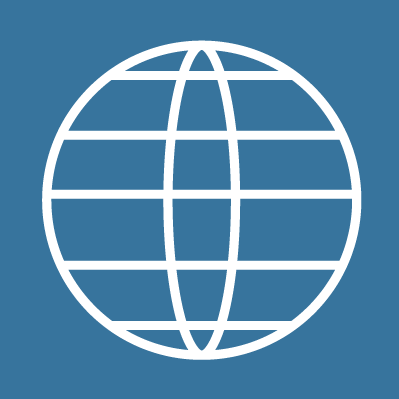februari 3, 2020
The healthcare industry is enjoying something of a renaissance today with the rapid digitisation of health data and the explosion of innovation in healthcare technologies. Electronic health records, artificial intelligence, and big data analytics have great potential to revolutionise our approach towards the diagnosis, treatment, and prevention of diseases.
Nonetheless, merely digitising health data is nonsensical without subsequent effort to turn them into meaningful information. A large portion of today’s health data is locked away in fragmented systems that cannot communicate with each other. This renders the digitised data virtually useless as what has actually changed is only the underlying medium – from paper to computer – without any significant improvement in data connectivity or the infrastructure and interfaces.
As such, we believe that interoperability is indispensable if we were to unlock the true potential of digital health. In fact, the ability to seamlessly exchange and use health data would become a prerequisite for most of the innovations that we envision for the future.
Interoperability for medication module
A good HER medication module does not necessarily need advanced analytics or artificial intelligence. In most cases, the key to operating an efficient system is the capacity to provide the right patient information to the right clinician at the right time. By simply facilitating the correct flow of vital information, patient care can be greatly enhanced. Indeed, interoperability across different systems, settings, and countries is pivotal to ensuring medication safety.
Inappropriate use of medicine increases the risk of harm to patients, particularly to vulnerable groups such as pregnant women or the elderly. Studies have suggested that interoperability failures were a patient safety hazard that could lead to patient harm under certain circumstances. As much as 8% of health information technology-related patient safety events had been traced back to interoperability failure; of these, medication safety was the most impacted (29% of all safety events caused by interoperability failure) (4).
For example, when a pregnant woman is hospitalised for high blood pressure, relevant information from her previous visits to other hospitals or health clinics should be available to the treating physicians to ensure appropriate care delivery. The hospital EHR medication module must be able to read and utilise information from both primary care and other hospitals, as well as other data sources such as the Swedish National Medication List (Nationella läkemedelslistan)(1) or the drug-drug interaction database (Janusmed interactions, previously known as SFINX)(2,3), to ensure the right medication is administered. High-risk drug-drug interactions or medicine that is contra-indicated in pregnancy must not reach the patient, and the medication module must be efficient in screening for these high alert medication issues.
Interoperability that crosses the geographic boundary
The ability to exchange data across different countries is also essential to ensure cross-border patient safety. This is particularly important for European Union citizens as the freedom of movement has encouraged many of us to work or travel abroad. This connectedness between European countries drives the need for international interoperability so that a network can be established to share health data securely and seamlessly.
Earlier this year, the EU made significant headway in cross-border exchange of health information. Finnish patients can now visit a pharmacy in Estonia to obtain medicine prescribed by their doctors in Finland (5), while doctors in Luxembourg can receive digital Patient Summaries from travellers coming from Czechia (6). These achievements not only signify the attainability of cross-border health information exchange but also highlight the need to invest in the right infrastructure today to reap the benefits of such connectivity.
Future outlook
The success of digital medicine hinges on interoperable data infrastructure and the underlying network to support it. Soon, healthcare organisations that embrace total interoperability – both nationally and internationally – will draw great returns from such investments as seamless health information exchange would pave the way for better patient safety, improve efficiency and lower cost.
Cambio COSMIC 3rd generation medication module is the most advanced, interoperable system that can communicate seamlessly with the entire spectrum of healthcare. Its intuitive interface allows fast access to comprehensive patient data from multiple sources, including primary care to specialised hospital units, to provide meaningful information for real-time decision making.
Reference:
- Nationella läkemedelslistan [Internet]. [cited 2019 Nov 19]. Available from: https://skl.se/halsasjukvard/lakemedel/nationelllakemedelslista.24310.html
- Böttiger Y, Laine K, Andersson ML, Korhonen T, Molin B, Ovesjö M-L, et al. SFINX—a drug-drug interaction database designed for clinical decision support systems. Eur J Clin Pharmacol. 2009 Jun 1;65(6):627–33.
- Janusmed interaktioner och riskprofil [Internet]. [cited 2019 Nov 19]. Available from: https://janusinfo.se/beslutsstod/janusmedinteraktionerochriskprofil.4.72866553160e98a7ddf1cdc.html
- Adams KT, Howe JL, Fong A, Puthumana JS, Kellogg KM, Gaunt M, et al. An Analysis of Patient Safety Incident Reports Associated with Electronic Health Record Interoperability. Appl Clin Inform. 2017 Apr;8(2):593–602.
- First EU citizens using ePrescriptions in other EU country [Internet]. European Commission – European Commission. [cited 2019 Nov 19]. Available from: https://ec.europa.eu/commission/presscorner/detail/IP_18_6808
- Daily News 21 / 06 / 2019 [Internet]. European Commission – European Commission. [cited 2019 Nov 19]. Available from: https://ec.europa.eu/commission/presscorner/detail/MEX_19_3351




